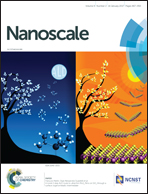Nano-layered magnesium fluoride reservoirs on biomaterial surfaces strengthen polymorphonuclear leukocyte resistance to bacterial pathogens
Abstract
Biomaterial-related bacterial infections cause patient suffering, mortality and extended periods of hospitalization, imposing a substantial burden on medical systems. In this context, understanding of nanomaterials–bacteria-cells interactions is of both fundamental and clinical significance. Herein, nano-MgF2 films were deposited on titanium substrate via magnetron sputtering. Using this platform, the antibacterial behavior and mechanism of the nano-MgF2 films were investigated in vitro and in vivo. It was found that, for S. aureus (CA-MRSA, USA300) and S. epidermidis (RP62A), the nano-MgF2 films possessed excellent anti-biofilm activity, but poor anti-planktonic bacteria activity in vitro. Nevertheless, both the traditional SD rat osteomyelitis model and the novel stably luminescent mouse infection model demonstrated that nano-MgF2 films exerted superior anti-infection effect in vivo, which cannot be completely explained by the antibacterial activity of the nanomaterial itself. Further, using polymorphonuclear leukocytes (PMNs), the critical immune cells of innate immunity, a complementary investigation of MgF2-bacteria-PMNs co-culturing revealed that the nano-MgF2 films improved the antibacterial effect of PMNs through enhancing their phagocytosis and stability. To our knowledge, this is the first time of exploring the antimicrobial mechanism of nano-MgF2 from the perspective of innate immunity both in vitro and in vivo. Based on the research results, a plausible mechanism is put forward for the predominant antibacterial effect of nano-MgF2in vivo, which may originate from the indirect immune enhancement effect of nano-MgF2 films. In summary, this study of surface antibacterial design using MgF2 nanolayer is a meaningful attempt, which can promote the host innate immune response to bacterial pathogens. This may give us a new understanding towards the antibacterial behavior and mechanism of nano-MgF2 films and pave the way towards their clinical applications.



 Please wait while we load your content...
Please wait while we load your content...